CLASSICAL PIANO SHOWS

The following shows are also all classical piano.
MUSIC-THE SOUNDTRACK TO LIFE
CLASSICAL PIANO SHOWS

The following shows are also all classical piano.
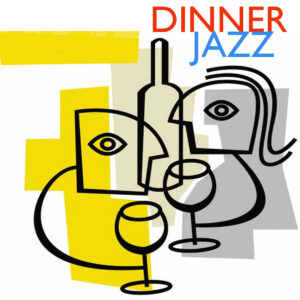
Easy going jazz staying discretely in the background for the cocktail hour so as not to confuse the scintilating conversations going on.
The one’s above have songs in the mix but the ones below are instrumental.
Maybe dinner music by the barbie?
These are old school swing jazz tunes performed by modern artists.
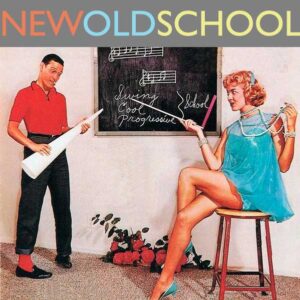
https://www.mixcloud.com/AuralFixations/is-that-classical-vol-6-lon-lon/Pieces that are do not fit firmly in the classical box.

Easy going instrumental jazz as background for the summer.
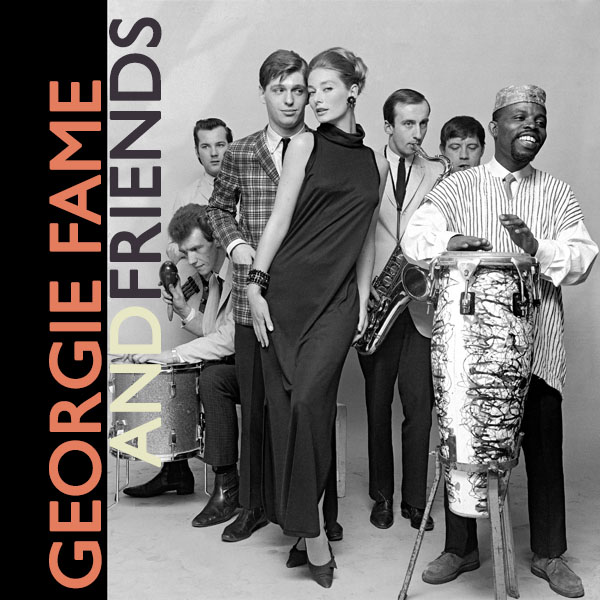
These shows revolve around the work of Georgie Fame and his musical friends who shared his tastes. Plus the original artists who’s work he introduced to the mainstream through his (always improved) cover versions.
Record Collector magazine said of him, “It’s imperative not to trust anyone who doesn’t love Georgie Fame”. He’s been called a ‘musician’s musician’ and in part because Georgie has always chosen to play with the best players around at the time in whatever musical genre.
Above Vol 11 features Alexis Korner from the early sixties doing some tasty piano along with the Hammond organ of Jimmy Smith, Georgie and Zoot Money who was also a regular at London’s Flamingo Club in the early sixties.
Below on Spotify…
https://open.spotify.com/playlist/4N8BXc24Ckf2fFoeCRZqRF?si=bbe294ee23ed4fc6
What has been central to his career is he always had an ear for a great and perhaps unknown song. He would introduce his audience to a song or an artist and at the same time do an individualized cover which was sometimes better than the original.
Below- Vol 2 Early years.
To date over some sixty years, his repertoire has spanned rhythm and blues, jazz, soul, ska, and calypso, along with big band jazz ballads and jazz standards.
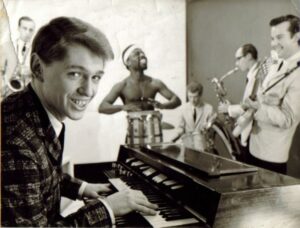
Clive Powell (b. 1943) which is his real name, came down to London at the age of 16 from Lancashire in the north. His manager at the time Larry Parnes wanted his boys to have names like Marty Wilde, Billy Fury, and Adam Faith.
He toured the UK playing beside Wilde, Joe Brown, Gene Vincent, Eddie Cochran and others. He played piano for Billy Fury in his backing band, The Blue Flames. Parnes thought they were “too jazzy” and replaced them with The Tornados. (Anyone remember Telstar ?)
At the end of 1961 they renamed themselves as “Georgie Fame and the Blue Flames” and went on to enjoy great success with a new manager Rick Gunnell. At first the repertoire was rhythm and blues. This widened to include jazz, soul and ska -which was an early form of reggae which could be heard in the Jamaican cafes in and around Ladbroke Grove near Portobello Road frequented by the group’s Jamaican born trumpeter Eddie Thornton.
During the group’s three-year residency at The Flamingo Club, Fame heard the latest jazz and blues from America and it was Booker T. & the M.G.’s “Green Onions” which inspired him to take up playing Hammond organ with the band.
“It was a great place to play, a midnight to 6 am thing on Fridays and Saturdays and it was full of American GIs who came in from their bases for the weekend. They brought records with them and one of them gave me “Green Onions” by Booker T & the MG’s. I had been playing piano up to that point but I bought a Hammond organ the next day”.
Val Wilmer, the writer and photographer, described the Wardour Street club in the early sixties – ‘The all-nighter at The Flamingo was quite wild. The black influence was strong there and to be honest it was all a bit of a blur. They were playing things like Lord Kitcheners ‘Dr Kitch’ over the PA and Dexter Gordon and Gene Ammonds and Jack McDuff and then Ska and Bluebeat. Everybody made an effort. It was stylish hair, nice dress, pencil skirts and pale pink lipstick. That was the thing.’ Georgie Fame once recalled: ‘It was the only place where black American GIs could hang out, dance and get out of it. By midnight, when the club opened, most of them were out of it. They would have left the base late afternoon got on the train with a bottle of something and by the time they came into the club they would be raving.’ Fame remembered one face in the crowd watching him: ‘Cassius Clay, as he was then, came down when he first fought Henry Cooper. Cassius would come into town and say, “Where do the brothers hang out?” He’d be told they all go down The Flamingo.’
(To get an idea of what was playing at the time on the dance floor hear my mixcloud playlists Dancing at The Flamingo.)
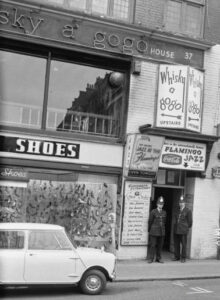
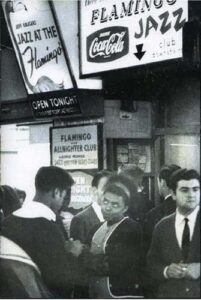

TO USE: Place one’s tongue firmly in cheek and press play
Also some cheesy Bachelor Pad music. Come up and see how big my Hi Fi is.
THE BEAT GENERATION:
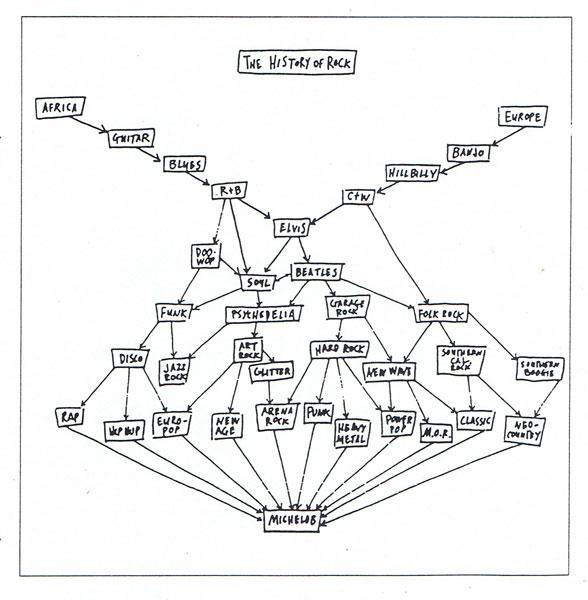
I start this collection of pre Beatles British rock with the 1956 Rock Island Line by Lonnie Donegan. This song I think is the best place to start to understand how Britain became a hotbed for Rock and Blues-even eventually selling it back to the people who invented in the first place !
I certainly remember that song along with Heartbreak Hotel which was REALLY different ! At the time I did not know that this was “Black” music entering the white mainstream.
“The first English record that was anywhere near good rock was ‘Move It’ by Cliff Richard and the Shadows. Before there’d been nothing” Move It
Oh Boy was the first TV show on the new commercial station ITV in the UK dedicated to the new musical trend. This clip is from 1959
Fried Onions-Lord Rockingham’s XI was a group of British session musicians, led by Harry Robinson (1932–1996), who had a No. 1 hit on the UK Singles Chart in 1958 with “Hoots Mon”.
The group was created to perform as the resident band on the pop TV program Oh Boy! which was produced by Jack Good and shown nationally on Britain’s ITV network during 1958/59. (SEE HERE) They were fronted by Harry Robinson and also included jazz baritone saxophonist (later writer/broadcaster) Benny Green, and organist Cherry Wainer. Other members were Wainer’s husband Don Storer (drums), Reg Weller (percussion), Red Price (tenor sax), Rex Morris (tenor sax), Cyril Reubens (baritone sax), Ronnie Black (double bass), Bernie Taylor (guitar), Eric Ford (guitar). Joining the group later were Kenny Packwood (guitar) and Ian Fraser (piano).
Cheryl Wainer doing Last Night in 1963 here.
Cheryl Wainer doing Peter Gunn in 1966 here
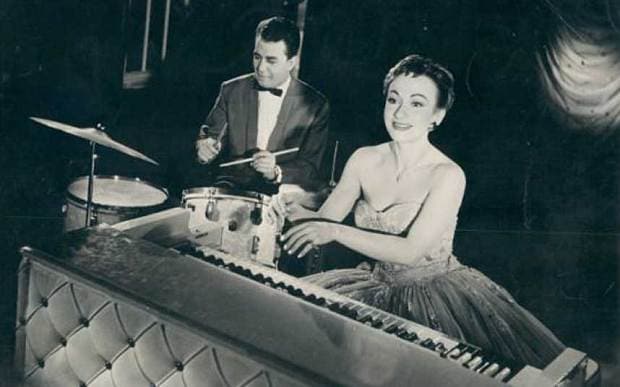
In addition to backing singers such as Marty Wilde and Cuddly Dudley they recorded several novelty rock instrumentals for Decca Records, the first being “Fried Onions”, which failed to chart in the UK but did slip into the US Billboard charts for a week at No. 96. The second single, Robinson’s “Hoots Mon”, a rocked-up version of the traditional Scottish song “A Hundred Pipers”, featuring cod Scotticisms like “Hoots mon, there’s a moose loose aboot this hoose!”, rose up the charts supported by weekly TV exposure, and stayed at number one for three weeks. They played “Long John” among others.
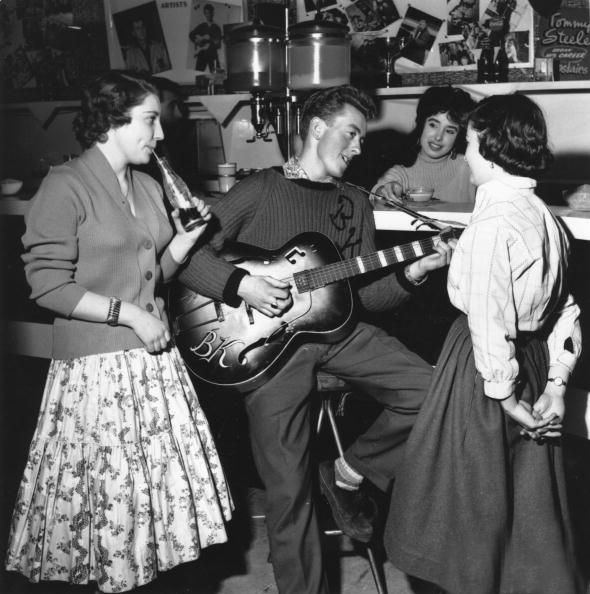
Following a legal case brought by descendants of the real Lord Rockingham, which was settled out of court, the group toured and made several less successful follow-ups, including “Wee Tom” (#16, 1959). They disbanded with the end of the TV show in 1959, although the name was revived for a couple of albums in the 1960s. Harry Robinson’s career in TV and music continued, one notable credit being for his string arrangement on Nick Drake’s track “River Man”.
“Fried Onions” was used in a television advertisement for Options indulgence chocolate drink, first shown on UK TV in December 2011.
Cherry Wainer died in Las Vegas, Nevada on November 14, 2014, at the age of 79.
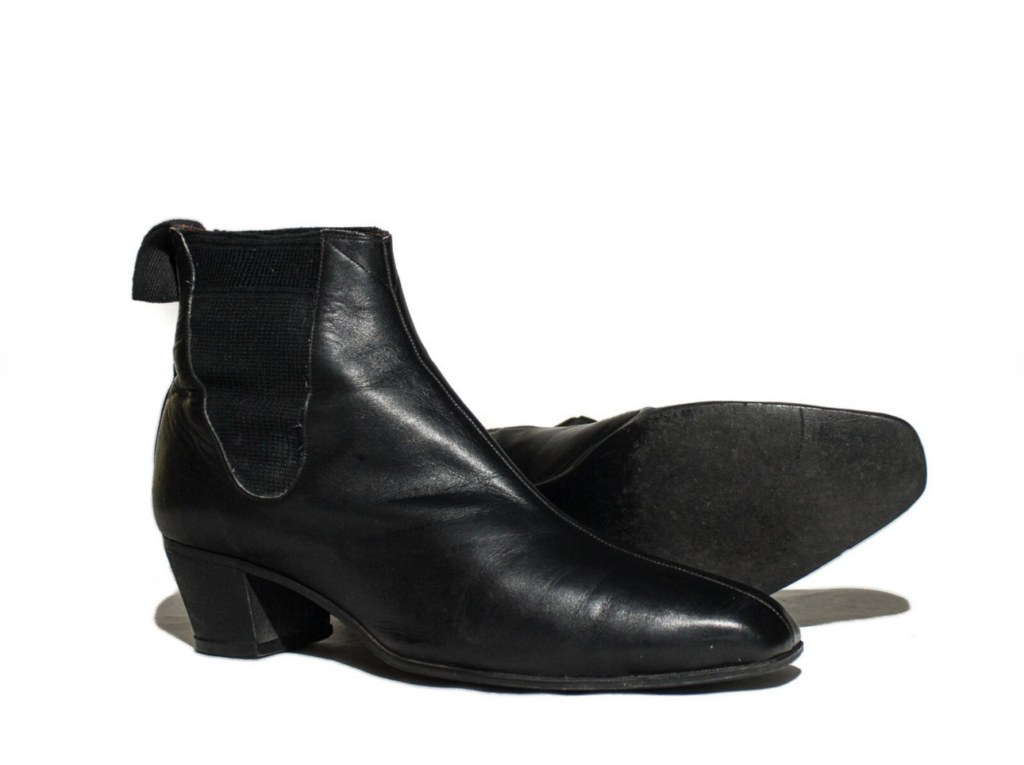
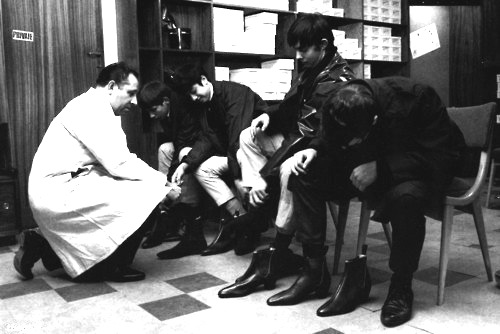
Above The original Beatle Boots were called “Baba” boots made at Annello and Davide in Soho for flamenco dancers. The company also made specialized shoes for dancers of all kinds.

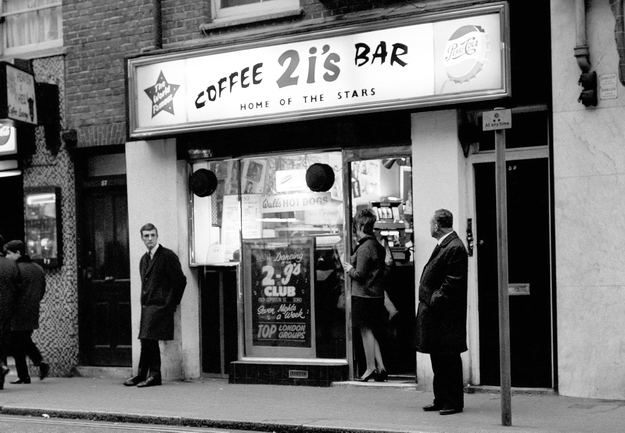
These are various classical compilations.
BELOW ARE “ALT” BACH SHOWS- contemporary versions of Bach
NIGHT MUSIC are relaxing late night classical pieces
4 ?
1?
Below-Pieces one would not think classical at first listening.
British Classical music:
Vol 1 The Lark Ascending
Vol 2 Fantasia on a Theme
Vol 3 Venus bringer of Peace
Vol 4 Oboe Concerto
Below Elgar: A very British composer
Below– Keith Jarrett plays Handel
Below– Latin classical piano pieces
Below: An almost hypnotic collection from Frederico Mompou.
Below: The Irish Chopin- John Field
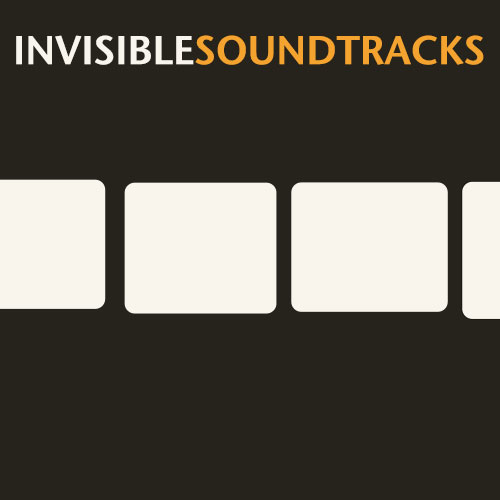
MUSIC FOR FILMS NEVER MADE- An eclectic collection of instrumental pieces from many genres that could or even were, soundtracks to a film.
___________
Vol 35– It starts with a train ride. There are some gangsters and it ends in car chase.
Vol 36– Just like the actual film it begins in a lush Venician setting.
Vol 27 Below starts somewhere in the Balkans and moves on to Egypt.
Vol 25 Below is set on some large tropical island. In the dstance one hears music.
Vol 24 -A minimalist movie. Philip Glass, Meredith Monk, Kronos Quartet, Ryuchi Sakamoto etc
Vol 22- The River (below) is an atmospheric one with a very haunting opening track from Bjorn Jason Lindh.
Vol 21 Below is a somewhat jaunty collection starting with the theme from The Grifters